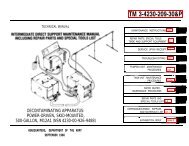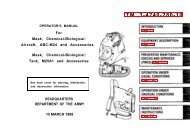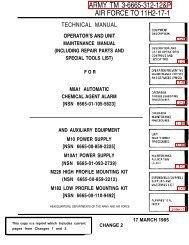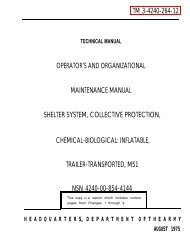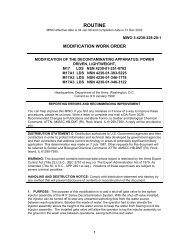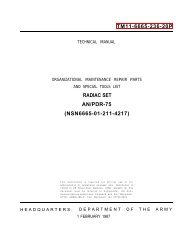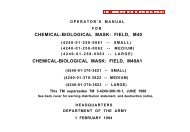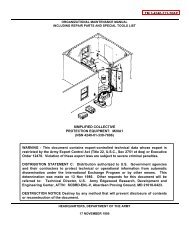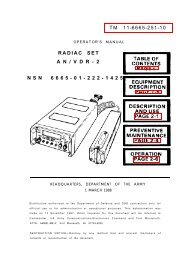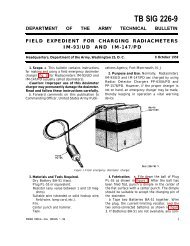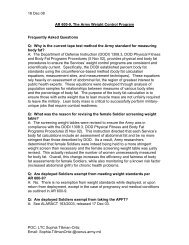LEADER DEVELOPMENT FOR AMERICA'S ARMY
LEADER DEVELOPMENT FOR AMERICA'S ARMY
LEADER DEVELOPMENT FOR AMERICA'S ARMY
Create successful ePaper yourself
Turn your PDF publications into a flip-book with our unique Google optimized e-Paper software.
officers, warrant officers, noncommissioned officers, and DS civilian of the Active Army, the Army National Guard,<br />
and the US Army Reserves. Leaders must be appropriately developed before assuming and while occupying leadership<br />
positions — to ensure they are competent in and confident of their ability to lead at the level assigned. In short, the<br />
goal is to develop competent, confident leaders who can exploit the full potential of present and future doctrine.<br />
.. Army leaders gain their skills, knowledge, and behavior (SKBs) through a combination of schooling, assignments,<br />
and self–development. Behavior refers to actions or reactions to specific situations based on attitude, beliefs, and<br />
values. Unlike attitudes, behavior is easily measured and influenced through positive and negative reinforcement.<br />
.. The Army’s formal leader development system is progressive — prepares leaders for increased levels of responsibility,<br />
complexity, and difficulty; and sequential — the next logical step in the education/training or assignment process<br />
builds upon the previous level — without large gaps. Three strong pillars support Army leader development (figure 1).<br />
Figure 1. Army Leader Development Model<br />
The Pillars Lessons learned from recent wars, humanitarian relief operations, and exercise suggest the Army’s<br />
progressive, sequential, and three–pillar approach to leader development is sound and produces the quality leaders our<br />
nation requires. The three pillars of leader development — institutional training and education, operation assignments,<br />
and self–development — are dynamics and interconnected. The individual gains SKBs at the institution and practices<br />
them during operational assignments to refine skills, broaden knowledge, and shape behavior. Meanwhile, these<br />
experiences are shared during institutional training and education. Self–development enhances, sustains, and expands<br />
SKBs assignments. The pillars adapt to force structure reductions; constrained resources; and advances and changes in<br />
doctrine, technology, and policy — as well as individual professional objectives.<br />
.. Institutional Training and Education. The Army’s school system provides leaders training (what to know) and<br />
education (how to do) and the opportunity to acquire SKBs needed to perform duty positions requirements. Training<br />
2 DA PAM 350–58 • 13 October 1994




